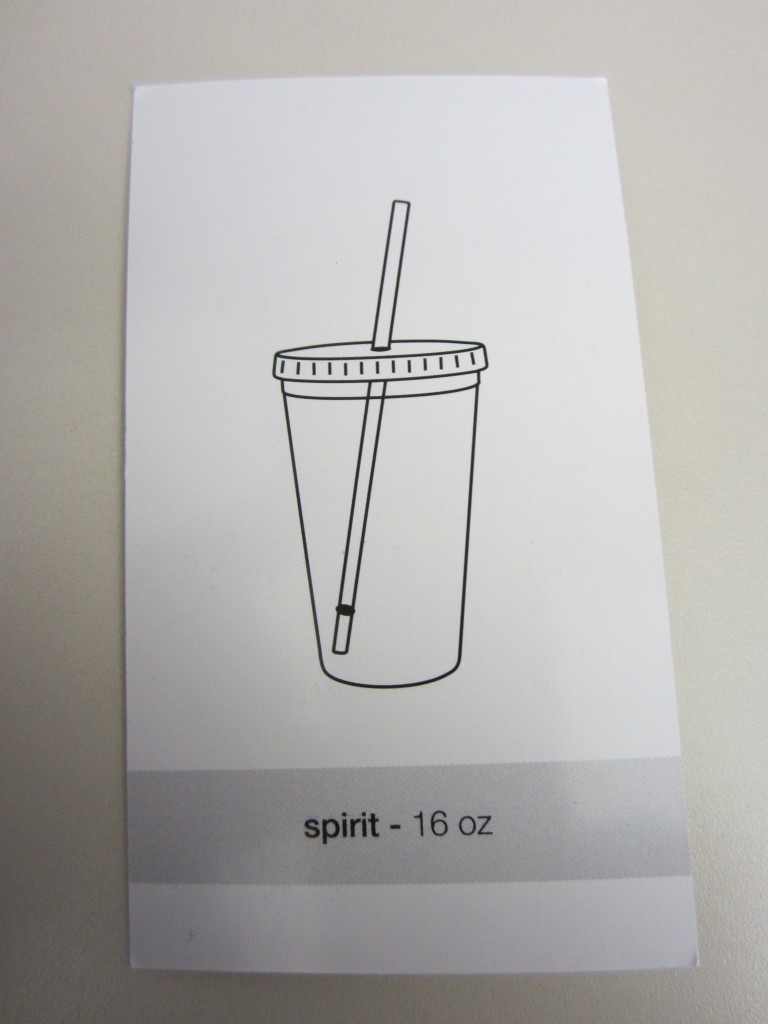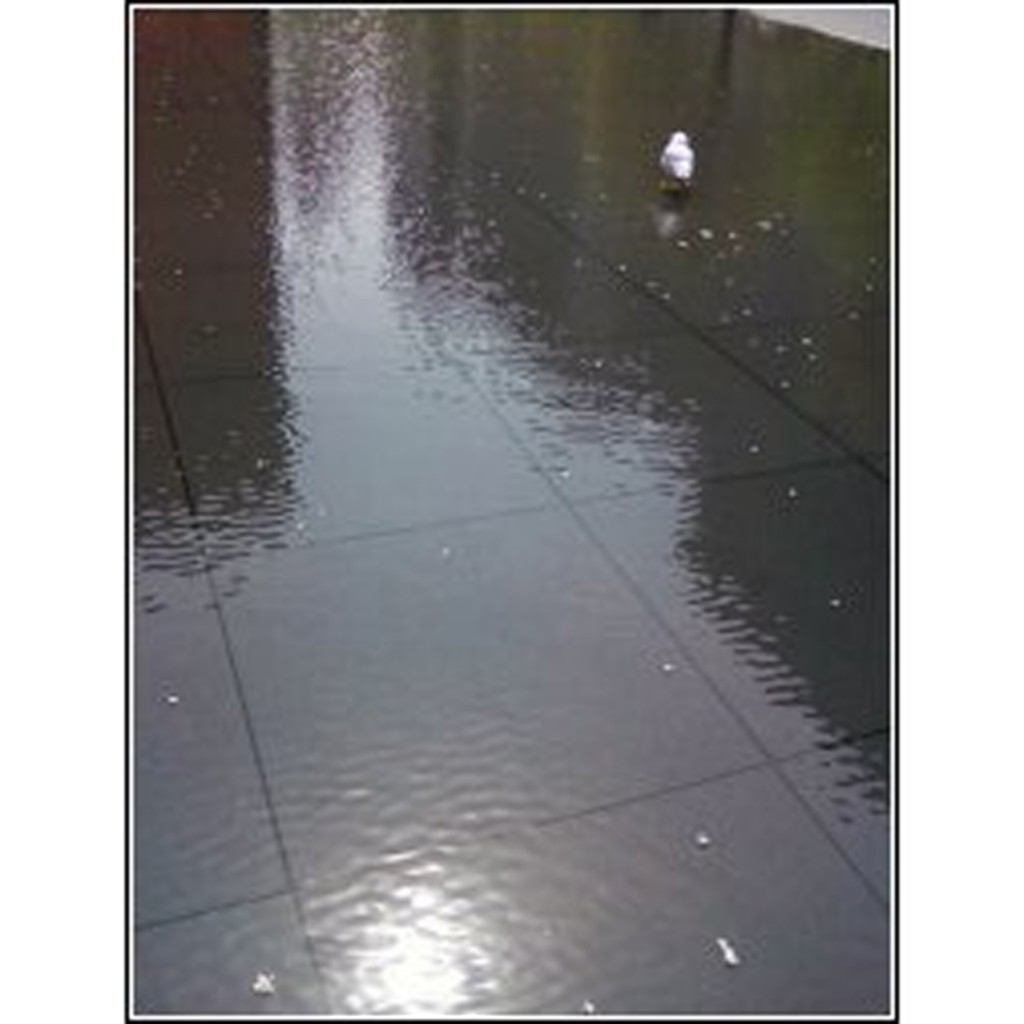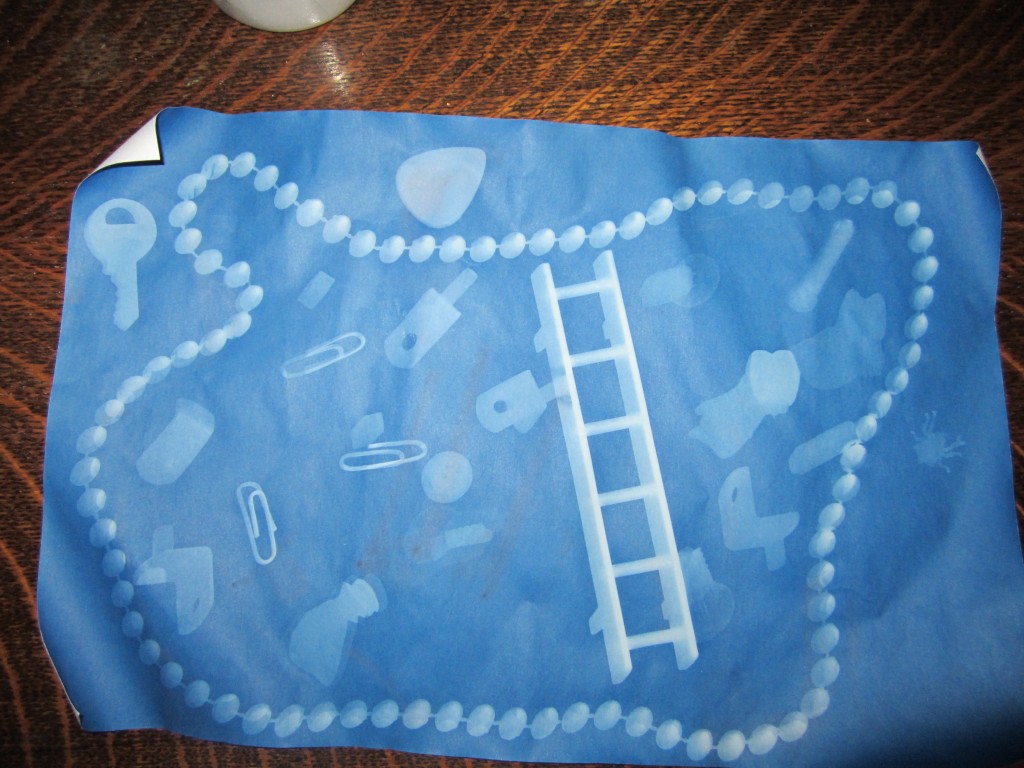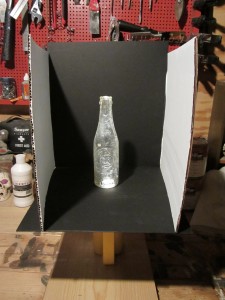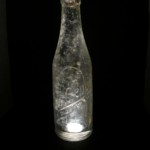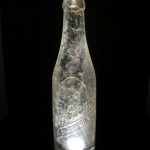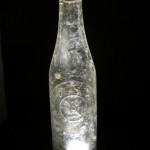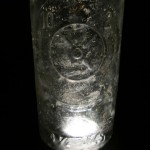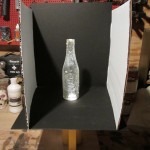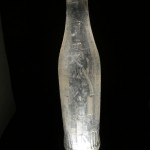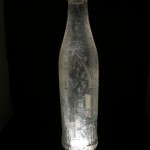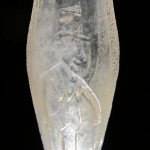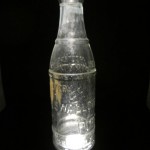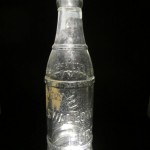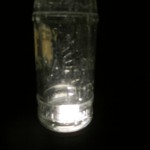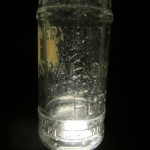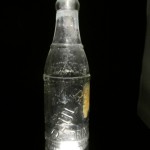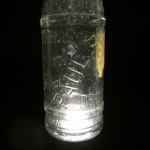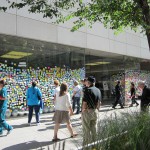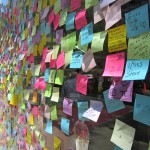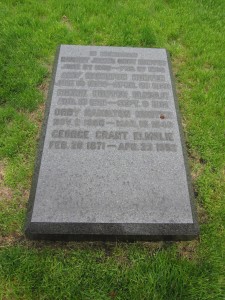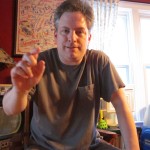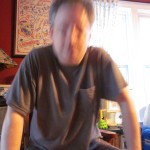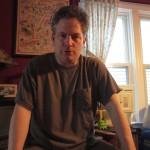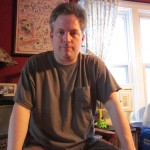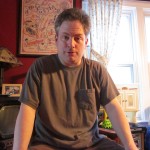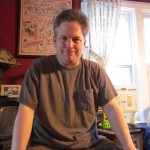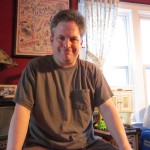February 4–March 30, 2002
In the shaky days after Sept. 11, German composer Karlheinz Stockhausen was roundly misquoted as describing the WTC attacks as the greatest work of art ever. Not so. German, with its knack for single words with myriad meanings, allowed the good professor to describe the day’s events as former angel Lucifer’s Künstwerk. Literally translated as “artwork,” the term more accurately denotes one’s handiwork. In Stockhausen’s approximation, Lucifer represents intelligence used to destroy creation, the devil’s creativity untinged by love.
On display Feb. 4 through March 30 at 72 E. Randolph, here is new york: a democracy of photographs displays 1,500 professional and amateur photographs of the days before, during, and after the attacks. The original exhibit emerged from a single picture posted in a New York store window, more photos being donated in the weeks afterward by dazed Knickerbockers, and applied one after the other like bandaids to the communal wounds. Stacked along the walls and dangled overhead in the Chicago gallery, the prints grant the viewer a visual experience approximating a fraction of the sensory overload felt by Manhattanites on an otherwise a beautiful early fall Tuesday.
Aesthetically, the day helped. Even here in Chicago the sun shone and the air was as crisp as peppermint. Weather favors the recording of tragedy. Challenger exploded against an azure sky, twin curling forks of smoke spiraling like DNA helices about a fluffy white plume. The Hindenburg gorgeously exploded against an early morning rain shower, brightly immolating and consuming itself into a crippled metal skeleton. Despite myself and watching safely from home on 9/11, I couldn’t help but be struck by the awesome sight of the towers burning like matchsticks and winnowing down against a perfect blue canvas sky. While the surface message of the show is one of endurance, American rah-rah, and cuddly solidarity, the unspoken theme is that of the aesthetics and disturbing beauty of destruction. Allegory or otherwise—your choice—Lucifer used his palette to present an “artwork” few will forget. here is new york, then, might be considered the coffee table book version of the whole hellish exhibit.
The late-January press review bore all requisite solemnity, though was largely unmemorable. A batch of suits and ties thanked us, the press, for coming; the show’s beneficiaries, the Children’s Aid Society WTC Relief Fund were cited (proceeds from the sales of selected prints go to them); and the names of the sponsors, Marshall Field’s and the Target store chain were repeatedly dropped. No one noted the unwitting inappropriateness of Target’s bull’s-eye logo being prominently displayed on the podium.
There were firefighters, of course. Not since the Iranian hostage crisis’ embassy workers has an occupation been so in demand for photo-ops and pull-quotes. The firefighters acquitted themselves nicely, of course, with the just-doing-our-job dignity that should come with their profession. Our own fire commissioner, the wonderfully named James Joyce, with his lived in face, stated that as he looked at them and they at him, they shared the ineffable emotions only the men and women in helmets and rubber raincoats can feel. The firemen themselves—names of Jeffrey Straub and Anthony Barone, and imported from NYC Engine 6—looked bright and shiny in their dress blues when they took the stand. Following the outline given them by the event organizers, an accidental note of unscripted emotion occurred when Straub, flanked by a photo of himself leaning against a car shelled by WTC detritus, explained what he was thinking at the time. Thinking about his fellow firefighter—and next-door neighbor it turned out—who had lost his life that day. A PR emissary takes the podium afterwards, thanking Firefighter Straub for sharing. It was “very emotional,” she needlessly underscored.
I’m sorry if I seem unnecessarily picky about proper tribute. The event is impossible to cheapen, but even the best-intentioned tend to overdo it. Solemnity can be spread so thick it becomes as overwhelming as the grey dust still coating Manhattan. The press review preliminaries, gratefully, ended, and we were left alone to survey the wreckage.
The number of photos was the first thing I noticed. As a first-world nation, we enjoy the luxury of documenting life down to the second. Cosmopolitan vacation spot New York provided an army of shutterbugs that day. Anonymity is the rule, regarding the photos’ authors, but degrees of professionalism seem easy to differentiate. Reasons for taking photos in the face of apocalypse are harder to pin down.
For the professionals, it was just part of the job. It was for Bill Biggart, whose shrine rested in back. The last picture of Biggart’s life is glorious yet horrific: It shows one side of the North Tower exploding into balsa wood splinters. The shot, splendidly framed, was obviously taken while looking up. The same fragments that Bill captured probably buried him. The next photo shows a pile of photographer’s tools—cameras and light meters scorched black, a singed and melted deck of press passes lying beside them.
The amateur photos are, as stated, relatively easy to identify. Varying levels of exposure, poor framing, and unimaginative composition abound. The tragedy, however, adds gravitas to the most banal shots. The exhibit isn’t about ability, it’s about the view through several hundred different eyes. En masse, the pictures all “work”—individually and as a collective.
Two images recur. One is of dragon’s fire bursting from the towers’ guts: A bright yellow fusion heart is at the center, burning brighter than the sun; the fringes of the holocaust are flushed with the colors of autumn leaves, slowly burning black. The other is that of the spectator, gazing upwards, one hand holding a cell phone against the ear, the other slapped against the forehead in disbelief.
Against the west wall, photo #6068 shows American death shrines in the style of Mexican Dia de los Muertos ofrendas. Bright orange posters surrounded by half-melted candles create an impermanent memorial to the unknown dead. One poster states, “I never met you. I will never forget you.” The other laments, “I don’t know you and I miss you already.”
In other photos, America’s bipolar reaction is documented. Peaceniks beg for cooler heads, marching with neatly rendered placards reading, “It’s Time for Reflection Not Revenge” and “Break the Cycle of Violence.” Opinions grow less tolerant closer to Ground Zero. The photos of dust, while visually dull, linger with me. The impact of the planes, the explosions were the media money shot. We didn’t see the dust on TV. We thought it was all fire and falling bricks. Photo #5681 stands out most for me. A William H. Macy clone dressed in blue Brooks Brothers and carrying a briefcase runs through a grey blizzard of lung-clotting dust. Office building dust jams up his day’s clockwork, the very materials in which he daily dealt business. Ironic that. Photos #1240, 1237, and 5192 show further capitalist paralysis with piles of Gap shirts and jeans and Perrier bottles buried in ash. Dust anesthetizes, rather than eradicates the City that Never Sleeps. Dust also provides a ready medium for rage. “WELCOME TO HELL” offers the back window of a Honda Civic in photo #1118. On photo #87, a “NUKE THEM ALL” graffito virtually screams from an opaque store window. Throughout the exhibit the dust messages debate, sentiments ranging from “Our Grief Is Not a Cry for War” to the less poetical “REVENGE.”
Moving on, certain photos help me recall a vow I made 25 years ago. On a grade school career day I stood in front of my class, dressed in a yellow rain slicker and a plastic fireman’s helmet—an Independence Day promo piece handed out by a local insurance agent. Words immortalized by fourth-graders before and after me tumbled from my mouth: “I want to grow up to be a fireman, so I can put out fires and help people.” Looking at picture after picture of dust-covered firefighters, burned-out eyes staring from beneath battered black helmets, I wanted to renew that vow. Photos #3383, 5247, 5234, 2424, and so on show walls of other firefighters, EMS techs, doctors, nurses, and just plain good Samaritans, in varying stages of exhaustion, human endurance stretched to a rubberband’s snapping. It’s all here, every emotion, every reaction. Photo #2763 shows two burly firefighters practically in a lover’s embrace. Unwitting comedy is achieved with a Scientologist counselor attempting to comfort a firefighter who looks like he’d rather be somewhere else enjoying his bottle of Poland Springs water.
Many of the photos, it must be pointed out, are disturbing. In #2840 blue-gloved medics handle a woman bleeding as red as her shirt. Beyond shock, her eyes are sealed with rust-colored dust. Still, for every image of a battered, bleeding, and broken human being, there’s a more reassuring and recurring image, that of an extended hand.
E.B. White, best known for Stuart Little and Charlotte’s Web, provided the ideal title and coda of the show in his 1949 piece “Here Is New York,” which presciently describes the urban inferno to come: “A single flight of planes no bigger than a wedge of geese can quickly end this island fantasy, burn the towers, crumble the bridges, turn the underground passages into lethal chambers, cremate the millions. The intimation of mortality is part of New York in the sound of jets overhead, in the black headline of the latest edition.”
Mr. White’s chilling clarvoyance aside (his assessment of the Big Apple’s vulnerability itself a fabulous example of the melancholy poetry of destruction), the effect of the original exhibit rested in its spontaneity, its proximity, and its participatory nature. While effective, we as Chicagoans miss the real power of the original show. Unlike street cows, this bit of city art doesn’t travel well or translate accurately. The gallery offers us a before, but we lack an after with which to compare it. It is our good fortune, of course, that we’re deprived of ashes from which to arise. New York, however, in characteristic braggadocio, shows the horrors it’s lived through and, six months later, has risen above.
Originally published in the Chicago Journal .
®2002 Dan Kelly
 Today’s blog addresses the piece of writing I worked on today. A well-overdue review of a book about Chicago’s Vivian Maier. Vivian, if you don’t know about her, worked as a nanny for most of her life and semi-secretly made a vocation of photography. Through the middle of the 20th century, Vivian snapped pictures of people on the street, self-portraits, urbanity and urban decay, and, as a strange sidebar, newspapers and documents, page by page. Vivian seemed uninterested in earning a living as a photographer. Good as she was, photography seemed more of an obsession than a means of self-expression. Afflicted with hoarding syndrome that grew worse with age, Vivian took tens of thousands of pictures, printed some, but mostly sacked away thousands of rolls of undeveloped film. When she died, few folks knew she’d been a serious photographer.
Today’s blog addresses the piece of writing I worked on today. A well-overdue review of a book about Chicago’s Vivian Maier. Vivian, if you don’t know about her, worked as a nanny for most of her life and semi-secretly made a vocation of photography. Through the middle of the 20th century, Vivian snapped pictures of people on the street, self-portraits, urbanity and urban decay, and, as a strange sidebar, newspapers and documents, page by page. Vivian seemed uninterested in earning a living as a photographer. Good as she was, photography seemed more of an obsession than a means of self-expression. Afflicted with hoarding syndrome that grew worse with age, Vivian took tens of thousands of pictures, printed some, but mostly sacked away thousands of rolls of undeveloped film. When she died, few folks knew she’d been a serious photographer.